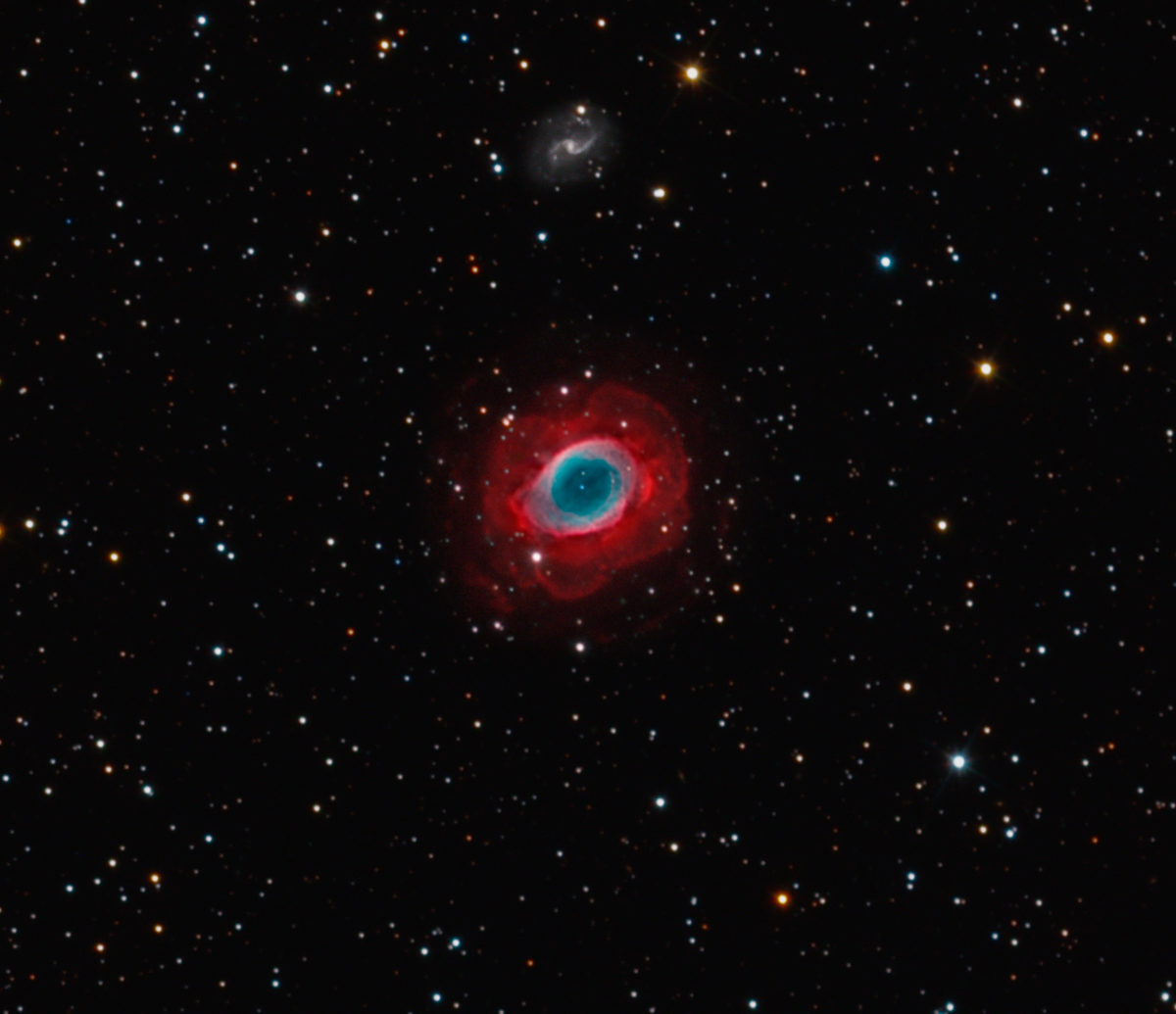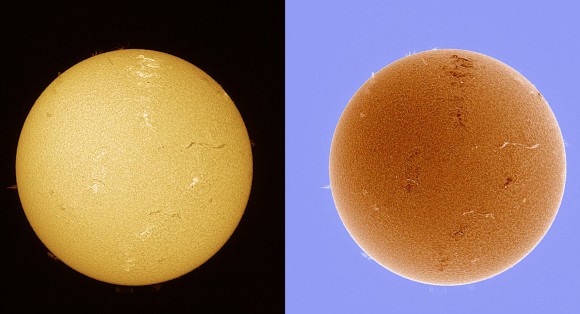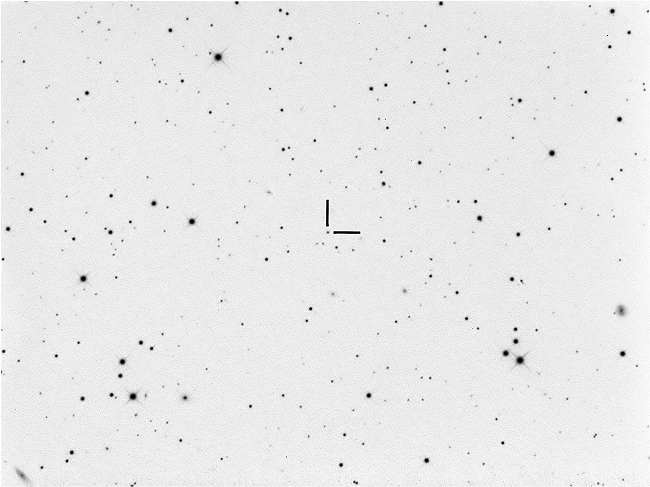I like Manuel Jung's Milky Way panorama. Here are some of the astronomical objects that we can identify in that image:
At far left there isn't much to see, apart from a lot of nebulosity. But above the nebulosity at far left you can see two clusters. They are NGC 6633 and IC 4665.
NGC 6633 and blue B-type star HD 170200:
http://www.capella-observatory.com/imag ... GC6633.jpg
IC 4665:
http://www.capella-observatory.com/imag ... IC4665.jpg
If we move slowly to the right, you come to a brightening just below the dark dust lane. The brightening is the so called Scutum star cloud. Rich and photogenic cluster M11 is in there somewhere, but I must admit that I can't see it here.
M11 in the Scutum star cloud:
http://71.18.228.62/images/M11%20AA.jpg
Let's move into the dust lane and move slowly to the right. We'll come to a large but diffuse brightening which is slightly pinkish. This is a large but rather diffuse emission nebula surrounding young cluster NGC 6604, which contains O-type star MY Serpentis.
To the right of NGC 6604 you can see a small-looking but intensely pink nebula. That is M16, the Eagle Nebula. The famous Hubble Elephant trunks, you know!
NGC 6604 and M16:
http://www.nightsky.at/Photo/Neb/M16_NGC6604_WN.html
Hubble Elephant trunks:
http://lib.store.yahoo.net/lib/skyimage/m16label.jpg
To the lower right of M16 you find a small comma-shaped pink nebula. That is M17, which is the birthplace of truly massive stars.
M17:
http://www.hrastro.com/M17_SwanNebula/M ... 24x640.jpg
To the right of M17, there is a small brightening in the dust lane. This is the Small Sagittarius star cloud.
The Small Sagittarius star cloud, with M17 at upper left and red emission nebula IC 1284 and blue reflection nebulae NGC 6590 and 6595 at lower right:
http://www.utahskies.org/image_library/ ... rCloud.jpg
To the upper right of the Small Sagittarius star cloud you can see a small bright cluster in the upper part of the black dust lane. The cluster is M23.
M23:
http://astroa.physics.metu.edu.tr/Astronom/SC/M23Y.HTM
Let go back to the main dust lane. Next you come to the fantastic part of the Milky Way where you find (from left to right) star cluster M21 and bright and famous nebulae Trifid Nebula and the Lagoon Nebula:
The Lagoon Nebula, the Trifid Nebula, star cluster M21 (to the upper left of red and blue Trifid):
http://www.utahskies.org/report/20010720/m8_m20_l.JPG
To the left of the Lagoon Nebula you can see a large yellowish bright patch below the dust lane. This is the main Sagittarius star cloud. It is really the bulge of our galaxy.
Large Sagittarius star cloud:
http://farm4.static.flickr.com/3196/271 ... de84ee.jpg
To the upper right of the large Sagittarius star cloud, inside the dark dust lane, you can see a small blue cluster. That is M6.
M6:
http://hera.ph1.uni-koeln.de/~heintzma/ ... ier/M6.htm
Almost directly below M6, but superimposed on the yellowish light from the Milky Way's bulge, is cluster M7.
M7:
http://www.utahskies.org/image_library/ ... orpius.jpg
To the upper right of M6, inside the dark dust lane, are two faint reddish nebulae. They are NGC 6357 and the Cat's Paw nebula:
NGC 6357 and the Cat's Paw Nebula:
http://www.astrosurf.com/lorenzi/ccd/ng ... 57_ccd.htm
Above NGC 6357 and the Cat's Paw Nebula, near the upper edge of the image, you can find the Antares and Rho Ophiuchi region.
The Antares and Rho Ophiuchi region:
http://oc-aisig.org/gallery/main.php?g2 ... alNumber=2
You should be able to see an obvious elongated comma-shaped feature, which is comma-shaped in one end and blue in the other. This is the large NGC 6231 complex with associated clusters and emission nebulae.
The NGC 6231 complex:
http://www.allthesky.com/clusters/previ ... 231m-p.jpg
Some distance to the right of the NGC 6231 complex, you can see the pink nebulosity associated with star cluster NGC 6188:
NGC 6188:
http://4.bp.blogspot.com/-W0OrzQDMFIs/T ... c_6188.jpg
There is a yellow brightening below the dust lane which contains NGC 6188, but I have nothing in particular to say about that. In fact, I have nothing to say about anything until we get to two bright stars to the relatively far right in the picture. There you can see Alpha and Beta Centauri, the Coalsack and the Southern Cross.
Alpha and Beta Centauri, the Coalsack and the Southern Cross:
http://www.centauri-dreams.org/wp-conte ... /alpha.jpg
Alpha Centauri is the most nearby of all stars, with the exception of tiny red dwarf Proxima Centauri (which can, however, be seen as a part of the Alpha Centauri system).
Well, great picture, Manuel Jung!
Ann









